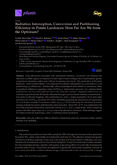| dc.contributor.author | Silva-Díaz, Cecilia | |
| dc.contributor.author | Ramírez, David A. | |
| dc.contributor.author | Rinza, Javier | |
| dc.contributor.author | Ninanya, Johan | |
| dc.contributor.author | Loayza, Hildo | |
| dc.contributor.author | Gómez, René | |
| dc.contributor.author | Anglin, Noelle L. | |
| dc.contributor.author | Eyzaguirre, Raúl | |
| dc.contributor.author | Quiroz, Roberto | |
| dc.date.accessioned | 2020-08-20T18:05:51Z | |
| dc.date.available | 2020-08-20T18:05:51Z | |
| dc.date.issued | 2020-06 | |
| dc.identifier.uri | https://repositorio.catie.ac.cr/handle/11554/9488 | |
| dc.description.abstract | Crop efficiencies associated with intercepted radiation, conversion into biomass and allocation to edible organs are essential for yield improvement strategies that would enhance geneticproperties to maximize carbon gain without increasing crop inputs. The production of 20 potatolandraces—never studied before—was analyzed for radiation interception (#i), conversion (#c) and partitioning (# p) efficiencies. Additionally, other physiological traits related to senescence delay (normalized difference vegetation index (NDVI)slp), tuberization precocity (tu), photosynthetic performance and dry tuber yield per plant (TY) were also assessed. Vegetation reflectance was remotely acquired and the efficiencies estimated through a process-based model parameterized by a time-series of airborne imageries. The combination of #i and #c, closely associated with an early tuber maturity and a NDVIslp explained 39% of the variability grouping the most productive genotypes. TY was closely correlated to senescence delay (rPearson = 0.74), indicating the usefulness of remote sensing methods for potato yield diversity characterization. About 89% of TY was explained by the first three principal components, associated mainly to tu, #c and #i, respectively. When comparing potato with other major crops, its # p is very close to the theoretical maximum. These findings suggest that there is room for improving #i and #c to enhance potato production. | es_ES |
| dc.description.uri | doi:10.3390/plants9060787 | |
| dc.language.iso | es | es_ES |
| dc.publisher | MDPI, Basel (Switzerland) | es_ES |
| dc.relation.ispartof | Plants Volumen 9, 0787 (2020) páginas 2-17 | es_ES |
| dc.rights | info:eu-repo/semantics/openAccess | es_ES |
| dc.subject | RADIACION | es_ES |
| dc.subject | SENESCENCIA | es_ES |
| dc.subject | SENSORES | es_ES |
| dc.subject | MODELACION DE LOS CULTIVOS | es_ES |
| dc.subject | BIOMASA | es_ES |
| dc.subject | GENOTIPOS | es_ES |
| dc.subject | SOLANUM TUBEROSUM | es_ES |
| dc.title | Radiation Interception, Conversion and Partitioning Efficiency in Potato Landraces: How Far Are We from the Optimum? | es_ES |
| dc.type | Artículo | es_ES |


